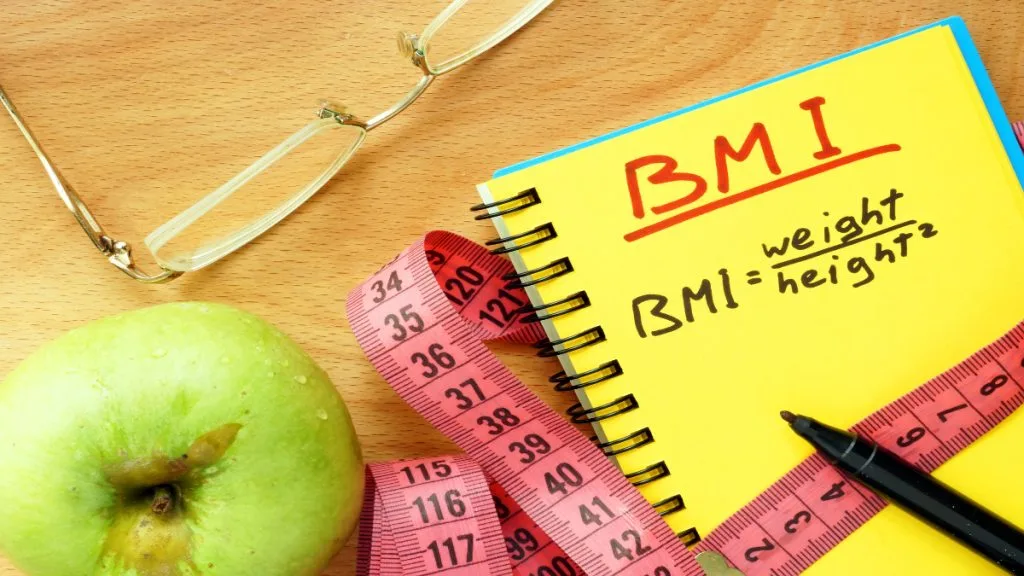A BMI of 17 is classed as underweight. But is this necessarily a bad thing?
Health isn’t measured by your body mass index score or by the number on the tape measure. Yet, being too thin can weaken your immune system and lead to malnutrition.
As such, it’s recommended to maintain a BMI that’s in the normal range (an ideal BMI) if you want to achieve optimal health. Obviously, since a 17 BMI is only slightly into the underweight category, you can, in some cases, still be healthy with a low BMI.
- What does BMI 11 look like?
- What does BMI 12 look like?
- What does BMI 13 look like?
- What does BMI 14 look like?
- What does BMI 15 look like?
- What does BMI 16 look like?
- What does BMI 18 look like?
Is a BMI of 17 low for a female?

A BMI of 17 is considered low for a female because it falls into the underweight body mass index category by 1.5 BMI points.
To give some indication of just how slim a BMI 17 woman is, the average woman has a body mass index that’s almost 12 points higher than our 17 BMI example.
Technically, a woman who has a BMI of 17 will be classed as having mild thinness or moderate thinness. This thinness alone is unlikely to be detrimental to health unless it lasts for a long period of time.
However, some research does show that women with a low BMI often have poor health. [1]
To know for certain whether your slightly-underweight body mass index of 17 is negatively affecting your health, you’ll need to talk to your doctor so that they can evaluate your health.
Remember, body mass index is a screening tool. So unless your BMI is extremely low or extremely high, it’s not a guarantee of anything.
Is a 17 BMI underweight for a male?

A BMI of 17 is considered underweight for a male and is a strong sign that a man has low levels of muscle mass and perhaps also minimal body fat.
Some men are naturally much slimmer than others, which can often be a problem for taller individuals who struggle to fill out their large frame.
Since most men have a BMI that’s over 12 points higher than 17, much of the public health effort is centered around obesity prevention.
As such, underweight individuals are often overlooked, meaning that their health can often take a turn for the worse if their BMI continues to fall (this is especially true with older adults).
Is a BMI of 17 dangerous

Whether or not a 17 BMI is dangerous depends on other things like your body fat, muscle mass, the quality of your diet, and your overall well-being.
It’s likely that a BMI of 17 is more dangerous for older adults and, in particular, elderly individuals. [2]
This is because when seniors lose weight and become too thin, they often struggle to regain their lost weight, which can lead to osteoporosis and a weakened immune system.
Of course, some younger people also have a low BMI due to body image issues and eating disorders like anorexia, which is an often overlooked problem that requires specialist attention.
Common BMI 17 scores and their classifications

When you put your weight and height into a body mass index calculator, you’ll probably get a reading like one of the following.
17.1 BMI
A 17.1 BMI is considered underweight for both men and women by approximately 1.5 BMI points and may need to be increased to achieve optimal health.
17.2 BMI
A BMI of 17.2 is on the underweight side of the BMI scale and is an indication that a person is a bit too thin for their height.
17.3 BMI
If you have a BMI of 17.3, then you’re classed as slightly underweight and may be encouraged to consume more healthy calories in order to gain weight and avoid malnutrition.
17.4 BMI
Those with a 17.4 BMI are significantly thinner than usual for a person of their height. This may be due to genetics, undereating, over-exercising, or a combination of all three.
17.5 BMI
A 17.5 BMI is around 1 BMI point into the underweight category and, as such, is classed as mildly thin. Someone with a BMI of 17.5 can easily move their body mass index into the normal category by gaining a small amount of weight.
17.6 BMI
If you’ve got a BMI of 17.6, then your body mass index score falls into the underweight classification. This may be a cause for concern as low BMIs often lead to worse health outcomes than higher (but not overweight) BMIs.
17.7 BMI
A 17.7 BMI is just a bit below the normal range and is an indication that an individual is on the thin side but likely not extremely skinny.
17.8 BMI
If you have a 17.8 BMI, then, statistically, you’re much slimmer than average for a person of your stature and, as a result, may need to gain weight in order to improve your long-term health.
17.9 BMI
A 17.9 BMI is only around half a BMI point into the underweight BMI category. Because of this, a BMI of 17.9 is likely not a huge concern over the short term.
However, it may benefit from being increased, especially as a person ages and becomes more prone to muscle loss.
The verdict: Is a 17 BMI good or not?
While there are body mass index scores that are much lower than seventeen, a BMI of 17 is still considered underweight and, therefore, too low.
Obviously, since a 17 BMI is only just into the underweight classification, we can’t say for certain that BMI 17 individuals will suffer from poor health.
There are many skinny people who have good health and, contrastingly, many thin individuals who lack vitality and strength due to their low weight.
So to get a true picture of anyone’s health, you need to take into account much more than their body mass index, although BMI does remain a useful screening tool for detecting both obesity (to an extent) and a low body weight.
References
- Dale, C., Nüesch, E., Prieto-Merino, D., Choi, M., Amuzu, A., Ebrahim, S., Casas, J. P., & Davey-Smith, G. (2015). Why do thin people have elevated all-cause mortality? Evidence on confounding and reverse causality in the association of adiposity and COPD from the British Women’s Heart and Health Study. PloS one, 10(4), e0115446. https://doi.org/10.1371/journal.pone.0115446
- Lorem, G. F., Schirmer, H., & Emaus, N. (2017). What is the impact of underweight on self-reported health trajectories and mortality rates: a cohort study. Health and quality of life outcomes, 15(1), 191. https://doi.org/10.1186/s12955-017-0766-x

